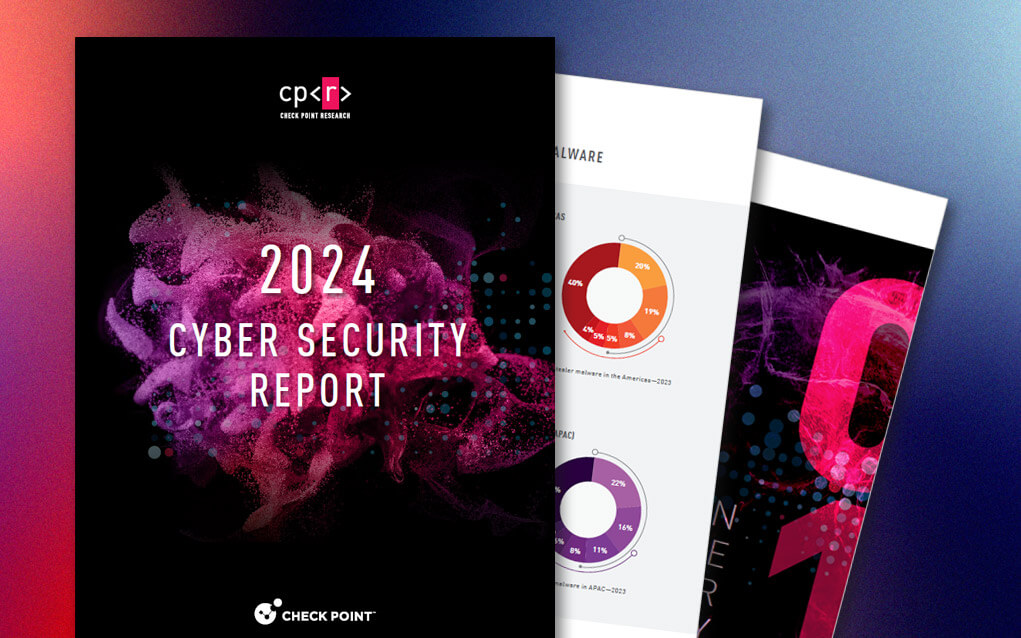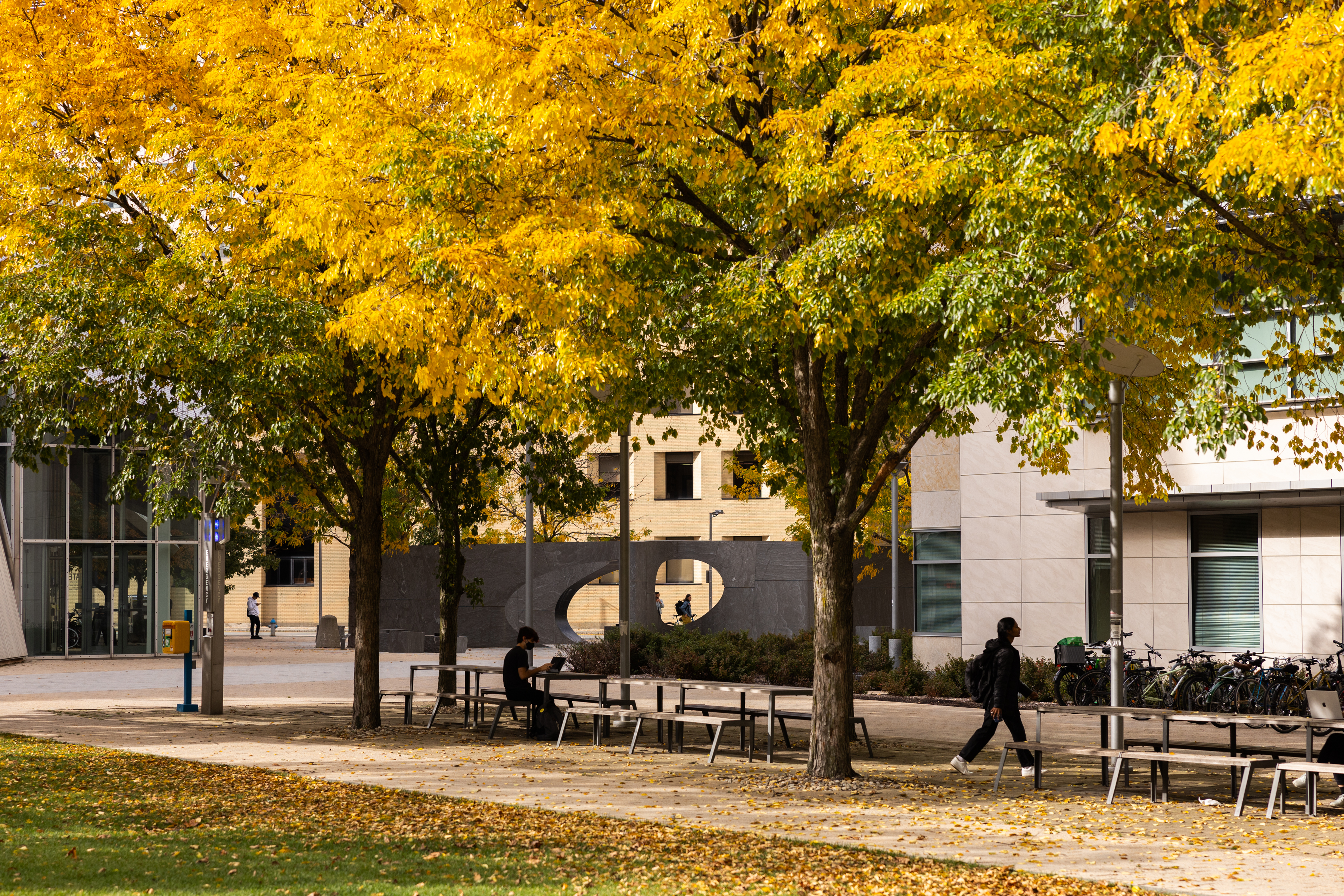Pollsters trying to predict presidential election results and physicists searching for distant exoplanets have at least one thing…
Artificial Intelligence reveals prostate cancer is not just one disease – Technology Org
Artificial Intelligence has helped scientists reveal a new form of aggressive prostate cancer, which could revolutionise how the…
Turn the tables: Advance your security with evidence-backed expert insights – CyberTalk

EXECUTIVE SUMMARY:
In 2023, the cyber threat landscape evolved at a record-breaking pace. Global cyber attacks increased by roughly 48%. Threats became more sophisticated and expensive to contend with than ever before.
Cyber security leaders who overlook recent developments risk being blindsided by powerful, persistent and potentially damaging cyber adversaries. The bad actors are well-financed and are finding network “footholds” in unprecedented ways.
More than two-thirds of companies report having experienced a cyber attack in the last 12 months. The alarming truth is that businesses aren’t adapting fast enough. As cyber crime accelerates, will your organization be able to keep up?
Included in the report
Newly developed ransomware techniques have intensified the malware’s impact on businesses. In 2023, Check Point Research observed a notable spike in large-scale ransomware attacks intended to disrupt multiple businesses in quick succession. Actual incidents impacted hundreds or thousands of entities.
| “By failing to prepare, you are preparing to fail,” – Benjamin Franklin |
And other evolving threats are even more pernicious than that. Threat actors have developed new tactics that covertly exploit edge devices for the purpose of executing extensive DDoS attacks, spam campaigns and network takeovers. Attackers have also increased their use of AI to scale efforts. AI is now used to analyze information, enhance phishing threats and to automate attacks.
The aforementioned represent just a fraction of the ways in which cyber attackers and attacks are becoming more sophisticated. Ensure that your organization knows which advanced security tools to implement. In the Check Point Research Cyber Security Report, get expert recommendations for strategic and innovative products that can keep pace with the latest threats.
Context as a compass
Context around contemporary threats can be just as critical as product recommendations, as context is what enables your organization to ‘see around corners’; to predict problems. Context defines agility. In short, context enables organizations to effectively anticipate, adapt to and respond to threats.
The environmental information included in the Check Point Research Cyber Security Report empowers security leaders to identify issues with greater accuracy and to present a stronger response.
Further details
In 2024, for the vast majority of organizations, confronting cyber security challenges will be a core business objective. As your organization looks ahead, ensure that it accounts for the latest cyber security trends, research, intelligence analyses and recommendations — as explained by preeminent industry experts.
Get valuable insights that can translate to stronger cyber security, improved business resilience, fewer nightmares and more sleep for your security staff. Discover why leading brands trust the Check Point Research Cyber Security Report. Download now.
For more information about the forces shaping the cyber threat landscape, subscribe to the CyberTalk.org newsletter. Get timely insights, cutting-edge analyses and more, delivered straight to your inbox each week.
Using generative AI to improve software testing

Generative AI is getting plenty of attention for its ability to create text and images. But those media represent only a fraction of the data that proliferate in our society today. Data are generated every time a patient goes through a medical system, a storm impacts a flight, or a person interacts with a software application.
Using generative AI to create realistic synthetic data around those scenarios can help organizations more effectively treat patients, reroute planes, or improve software platforms — especially in scenarios where real-world data are limited or sensitive.
For the last three years, the MIT spinout DataCebo has offered a generative software system called the Synthetic Data Vault to help organizations create synthetic data to do things like test software applications and train machine learning models.
The Synthetic Data Vault, or SDV, has been downloaded more than 1 million times, with more than 10,000 data scientists using the open-source library for generating synthetic tabular data. The founders — Principal Research Scientist Kalyan Veeramachaneni and alumna Neha Patki ’15, SM ’16 — believe the company’s success is due to SDV’s ability to revolutionize software testing.
SDV goes viral
In 2016, Veeramachaneni’s group in the Data to AI Lab unveiled a suite of open-source generative AI tools to help organizations create synthetic data that matched the statistical properties of real data.
Companies can use synthetic data instead of sensitive information in programs while still preserving the statistical relationships between datapoints. Companies can also use synthetic data to run new software through simulations to see how it performs before releasing it to the public.
Veeramachaneni’s group came across the problem because it was working with companies that wanted to share their data for research.
“MIT helps you see all these different use cases,” Patki explains. “You work with finance companies and health care companies, and all those projects are useful to formulate solutions across industries.”
In 2020, the researchers founded DataCebo to build more SDV features for larger organizations. Since then, the use cases have been as impressive as they’ve been varied.
With DataCebo’s new flight simulator, for instance, airlines can plan for rare weather events in a way that would be impossible using only historic data. In another application, SDV users synthesized medical records to predict health outcomes for patients with cystic fibrosis. A team from Norway recently used SDV to create synthetic student data to evaluate whether various admissions policies were meritocratic and free from bias.
In 2021, the data science platform Kaggle hosted a competition for data scientists that used SDV to create synthetic data sets to avoid using proprietary data. Roughly 30,000 data scientists participated, building solutions and predicting outcomes based on the company’s realistic data.
And as DataCebo has grown, it’s stayed true to its MIT roots: All of the company’s current employees are MIT alumni.
Supercharging software testing
Although their open-source tools are being used for a variety of use cases, the company is focused on growing its traction in software testing.
“You need data to test these software applications,” Veeramachaneni says. “Traditionally, developers manually write scripts to create synthetic data. With generative models, created using SDV, you can learn from a sample of data collected and then sample a large volume of synthetic data (which has the same properties as real data), or create specific scenarios and edge cases, and use the data to test your application.”
For example, if a bank wanted to test a program designed to reject transfers from accounts with no money in them, it would have to simulate many accounts simultaneously transacting. Doing that with data created manually would take a lot of time. With DataCebo’s generative models, customers can create any edge case they want to test.
“It’s common for industries to have data that is sensitive in some capacity,” Patki says. “Often when you’re in a domain with sensitive data you’re dealing with regulations, and even if there aren’t legal regulations, it’s in companies’ best interest to be diligent about who gets access to what at which time. So, synthetic data is always better from a privacy perspective.”
Scaling synthetic data
Veeramachaneni believes DataCebo is advancing the field of what it calls synthetic enterprise data, or data generated from user behavior on large companies’ software applications.
“Enterprise data of this kind is complex, and there is no universal availability of it, unlike language data,” Veeramachaneni says. “When folks use our publicly available software and report back if works on a certain pattern, we learn a lot of these unique patterns, and it allows us to improve our algorithms. From one perspective, we are building a corpus of these complex patterns, which for language and images is readily available. “
DataCebo also recently released features to improve SDV’s usefulness, including tools to assess the “realism” of the generated data, called the SDMetrics library as well as a way to compare models’ performances called SDGym.
“It’s about ensuring organizations trust this new data,” Veeramachaneni says. “[Our tools offer] programmable synthetic data, which means we allow enterprises to insert their specific insight and intuition to build more transparent models.”
As companies in every industry rush to adopt AI and other data science tools, DataCebo is ultimately helping them do so in a way that is more transparent and responsible.
“In the next few years, synthetic data from generative models will transform all data work,” Veeramachaneni says. “We believe 90 percent of enterprise operations can be done with synthetic data.”
Reimagine Your Space with AI: How to Transform Your Home in 2024
In today’s fast-paced world, interior design has taken a leap into the future with the integration of artificial intelligence (AI). The power of AI tools in interior design opens up a realm of possibilities, making the process of transforming spaces not just easier but also more…
AI in Higher Education – Balancing the Risks and Rewards
A significant portion of the discussion around generative AI tools has focused on the challenges related to academic integrity and AI plagiarism. Cheating has dominated the discourse. As a result, many administrators and instructors’ primary focus has been a search for tools that uncover AI-generated writing….
AI Optimism vs. Skepticism: Why Are the Knowledge Workers Confused?
Artificial Intelligence (AI) is one of the most transformative technologies of the present time, with the potential to revolutionize various domains such as education, health, business, and entertainment. However, AI poses significant challenges and risks, such as ethical, social, legal, and economic implications. As a result,…
School of Science announces 2024 Infinite Expansion Awards

The MIT School of Science has announced nine postdocs and research scientists as recipients of the 2024 Infinite Expansion Award, which highlights extraordinary members of the MIT community.
The following are the 2024 School of Science Infinite Expansion winners:
- Sarthak Chandra, a research scientist in the Department of Brain and Cognitive Sciences, was nominated by Professor Ila Fiete, who wrote, “He has expanded the research abilities of my group by being a versatile and brilliant scientist, by drawing connections with a different area that he was an expert in from his PhD training, and by being a highly involved and caring mentor.”
- Michal Fux, a research scientist in the Department of Brain and Cognitive Sciences, was nominated by Professor Pawan Sinha, who wrote, “She is one of those figurative beams of light that not only brilliantly illuminate scientific questions, but also enliven a research team.”
- Andrew Savinov, a postdoc in the Department of Biology, was nominated by Associate Professor Gene-Wei Li, who wrote, “Andrew is an extraordinarily creative and accomplished biophysicist, as well as an outstanding contributor to the broader MIT community.”
- Ho Fung Cheng, a postdoc in the Department of Chemistry, was nominated by Professor Jeremiah Johnson, who wrote, “His impact on research and our departmental community during his time at MIT has been outstanding, and I believe that he will be a worldclass teacher and research group leader in his independent career next year.”
- Gabi Wenzel, a postdoc in the Department of Chemistry, was nominated by Assistant Professor Brett McGuire, who wrote, “In the one year since Gabi joined our team, she has become an indispensable leader, demonstrating exceptional skill, innovation, and dedication in our challenging research environment.”
- Yu-An Zhang, a postdoc in the Department of Chemistry, was nominated by Professor Alison Wendlandt, who wrote, “He is a creative, deep-thinking scientist and a superb organic chemist. But above all, he is an off-scale mentor and a cherished coworker.”
- Wouter Van de Pontseele, a senior postdoc in the Laboratory for Nuclear Science, was nominated by Professor Joseph Formaggio, who wrote, “He is a talented scientist with an intense creativity, scholarship, and student mentorship record. In the time he has been with my group, he has led multiple facets of my experimental program and has been a wonderful citizen of the MIT community.”
- Alexander Shvonski, a lecturer in the Department of Physics, was nominated by Assistant Professor Andrew Vanderburg, who wrote, “… I have been blown away by Alex’s knowledge of education research and best practices, his skills as a teacher and course content designer, and I have been extremely grateful for his assistance.”
- David Stoppel, a research scientist in The Picower Institute for Learning and Memory, was nominated by Professor Mark Bear and his research group, who wrote, “As impressive as his research achievements might be, David’s most genuine qualification for this award is his incredible commitment to mentorship and the dissemination of knowledge.”
Winners are honored with a monetary award and will be celebrated with family, friends, and nominators at a later date, along with recipients of the Infinite Mile Award.
At Sustainability Connect 2024, a look at how MIT is decarbonizing its campus
How is MIT working to meet its goal of decarbonizing the campus by 2050? How are local journalists communicating climate impacts and solutions to diverse audiences? What can each of us do to bring our unique skills and insight to tackle the challenges of climate and sustainability?
These are all questions asked — and answered — at Sustainability Connect, the yearly forum hosted by the MIT Office of Sustainability that offers an inside look at this transformative and comprehensive work that is the foundation for MIT’s climate and sustainability leadership on campus. The event invites individuals in every role at MIT to learn more about the sustainability and climate work happening on campus and to share their ideas, highlight important work, and find new ways to plug into ongoing efforts. “This event is a reminder of the remarkable, diverse, and committed group of colleagues we are all part of at MIT,” said Director of Sustainability Julie Newman as the event kicked off alongside Interfaith Chaplain and Spiritual Advisor to the Indigenous Community Nina Lytton, who offered a moment of connection to attendees. At the event, that diverse and committed group was made up of more than 130 community members representing more than 70 departments, labs, and centers.
This year, Sustainability Connect was timed with announcement of the new Climate Project at MIT, with Vice Provost Richard Lester joining the event to expound on MIT’s deep commitment to tackling the climate challenge over the next 10 years through a series of climate missions — many of which build upon the ongoing research taking place across campus already. In introducing the Climate Project at MIT, Lester echoed the theme of connection and collaboration. “This plan is about helping bridge the gap between what we would accomplish as a collection of energetic, talented, ambitious individuals, and what we’re capable of if we act together,” he said.
Sustainability Connect 2024: Decarbonizing the Campus
Video: MIT Office of Sustainability
Highlighting one of the many collaborative efforts to address MIT’s contributions to climate change was the Decarbonizing the Campus panel, which provided a real-time look at MIT’s work to eliminate carbon emissions from campus by 2050. Newman and Vice President for Campus Services and Stewardship Joe Higgins, along with Senior Campus Planner Vasso Mathes, Senior Sustainability Project Manager Steve Lanou, and PhD student Chenhan Shao, shared the many ways MIT is working to decarbonize its campus now and respond to evolving technologies and policies in the future. “A third of MIT’s faculty and researchers … are working to identify ways in which MIT can amplify its contributions to addressing the world’s climate crisis. But part and parcel to that goal is we’re putting significant effort into decarbonizing MIT’S own carbon footprint here on our campus,” Higgins said before highlighting how MIT continues to work on projects focused on building efficiency, renewable energy on campus and off, and support of a cleaner grid, among many decarbonization strategies.
Newman shared the way in which climate education and research play an important role through the Decarbonization Working Group research streams, and courses like class 4.s42 (Carbon Reduction Pathways for the MIT Campus) offered by Professor Christoph Reinhart. Lanou and Shao also showcased how MIT is optimizing its response to Cambridge’s Building Energy Use Disclosure Ordinance, which is aimed at tracking and reducing emissions from large commercial properties in the city with a goal of net-zero buildings by 2035. “We’ve been able [create] pathways that would be practical, innovative, have a high degree of accountability, and that could work well within the structures and the limitations that we have,” Lanou said before debuting a dashboard he and Shao developed during Independent Activities Period to track and forecast work to meet the Cambridge goal.
MIT’s robust commitment to decarbonize its campus goes beyond energy systems, as highlighted by the work of many staff members who led roundtables as part of Sustainability in Motion, where attendees were invited to sit down with colleagues from across campus responsible for implementing the numerous climate and sustainability commitments. Teams reported out on progress to date on a range of efforts including sustainable food systems, safe and sustainable labs, and procurement. “Tackling the unprecedented challenges of a changing planet in and around MIT takes the support of individuals and teams from all corners of the Institute,” said Assistant Director of Sustainability Brian Goldberg in leading the session. “Whether folks have sustainability or climate in their job title, or they’ve contributed countless volunteer hours to the cause, our community members are leading many meaningful efforts to transform MIT.”
Sustainability Connect 2024: Climate in the Media Panel
Video: Office of Sustainability
The day culminated with a panel on climate in the media, taking the excitement from the room and putting it in context — how do you translate this work, these solutions, and these challenges for a diverse audience with an ever-changing appetite for these kinds of stories? Laur Hesse Fisher, program director for the Environmental Solutions Initiate (ESI); Barbara Moran, climate and environment reporter at WBUR radio; and independent climate journalist Annie Ropeik joined the panel moderated by Knight Science Journalism Program at MIT Director Deborah Blum. Blum spoke of the current mistrust of not only the media but of news stories of climate impacts and even solutions. “To those of us telling the story of climate change, how do we reach resistant audiences? How do we gain their trust?” she asked.
Fisher, who hosts the TIL Climate podcast and leads the ESI Journalism Fellowship, explained how she shifts her approach depending on her audience. “[With TIL Climate], a lot of what we do is, we try to understand what kinds of questions people have,” she said. “We have people submit questions to us, and then we answer them in language that they can understand.”
For Moran, reaching audiences relies on finding the right topic to bridge to deeper issues. On a recent story about solar arrays and their impact on forests and the landscape around them, Moran saw bees and pollinators as the way in. “I can talk about bees and flowers. And that will hook people enough to get in. And then through that, we can address this issue of forest versus commercial solar and this tension, and what can be done to address that, and what’s working and what’s not,” she said.
The panel highlighted that even as climate solutions and challenges become clearer, communicating them can remain a challenge. “Sustainability Connect is invaluable when it comes to sharing our work and bringing more people in, but over the years, it’s become clear how many people are still outside of these conversations,” said Newman. “Capping the day off with this conversation on climate in the media served as a jumping-off point for all of us to think how we can better communicate our efforts and tackle the challenges that keep us from bringing everyone to the table to help us find and share solutions for addressing climate change. It’s just the beginning of this conversation.”
Final Fantasy VII Rebirth Vs. Like A Dragon: Infinite Wealth | Segway Showdown

Both Final Fantasy VII Rebirth and Like a Dragon: Infinite Wealth inexplicably feature Segway-inspired scooters. We don’t know why this happened, or if developers at Square Enix and Ryu Ga Gotoku Studio were in communication, or if scooters happen to be really popular in Japan right now – we don’t know. One question we can answer, however, is which one is better?
Join Marcus Stewart and me as we put the two Segway-inspired scooters to the test side-by-side across a series of competitions and stunts to see which two-wheeled balancing vehicle is the best.
[embedded content]
Head over to Game Informer’s YouTube channel for more previews, reviews, and discussions of new and upcoming games. And watch episodes of New Gameplay Today right here.


